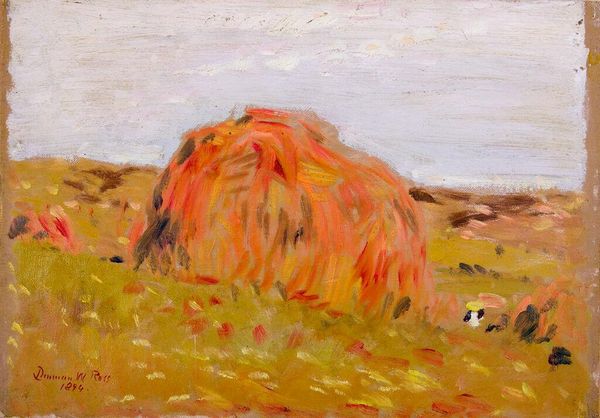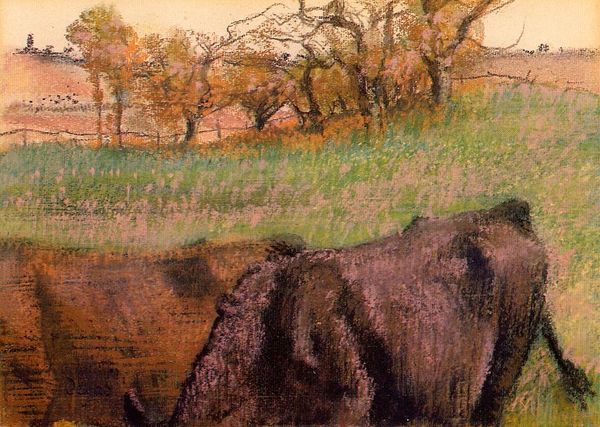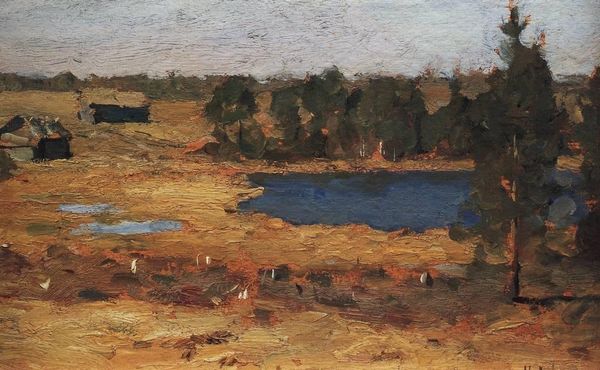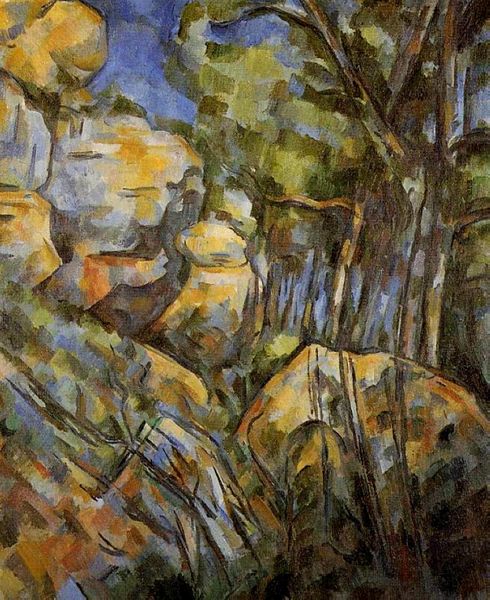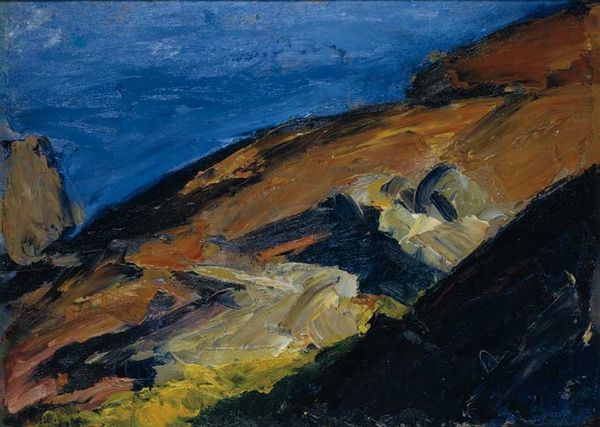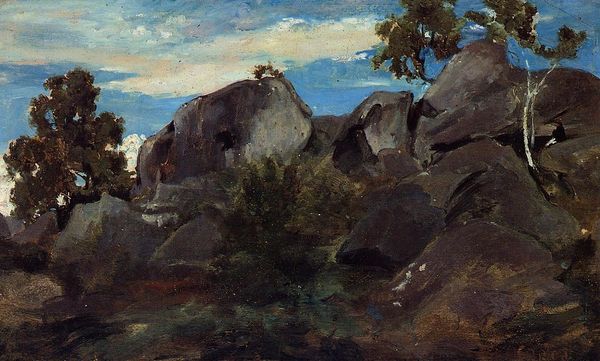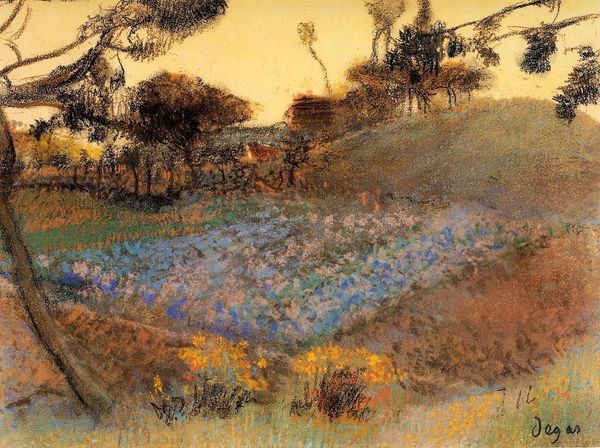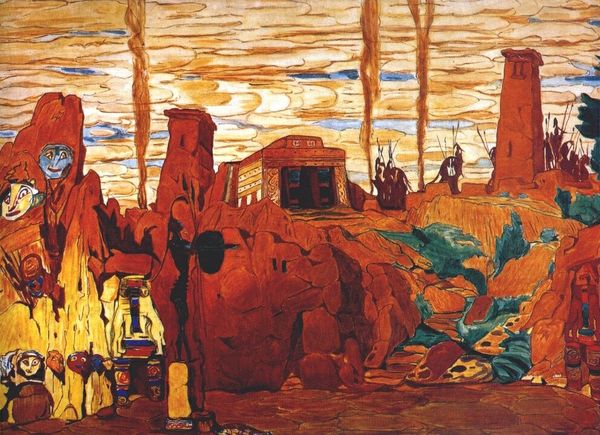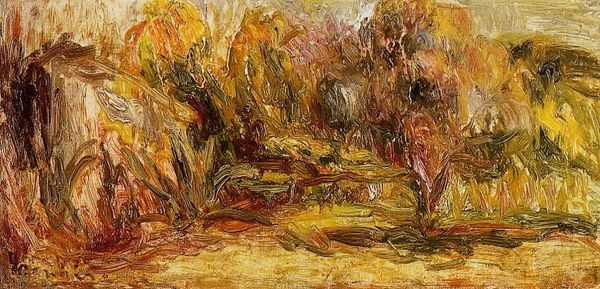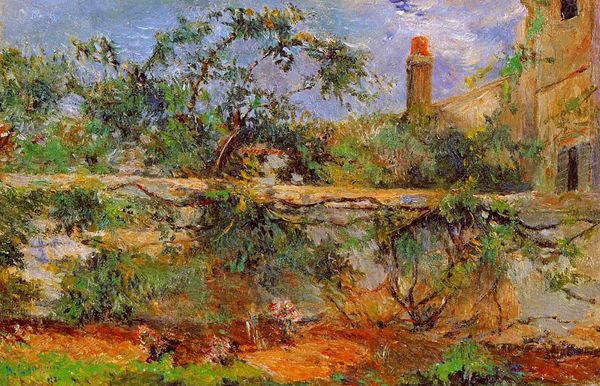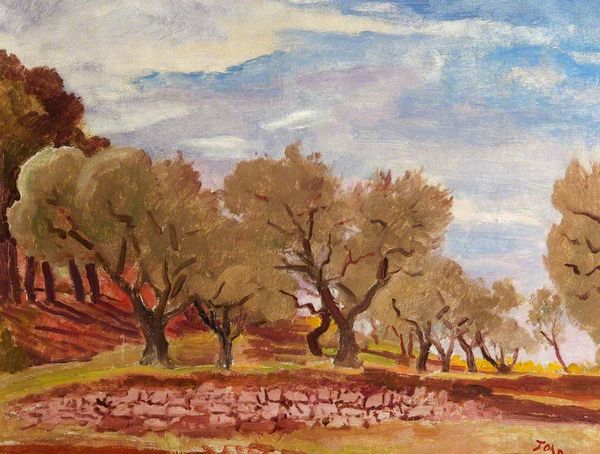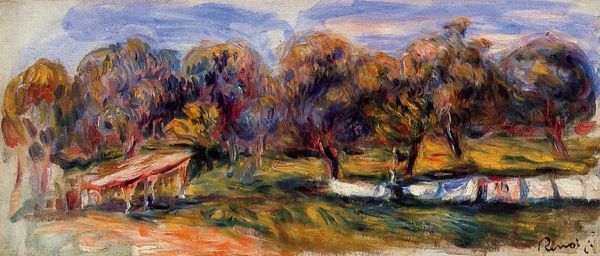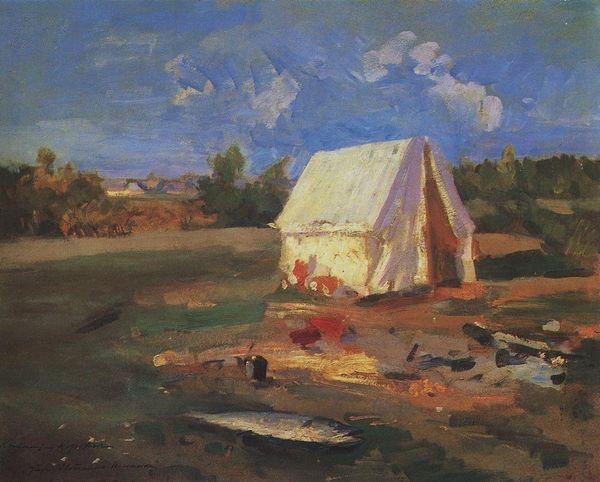
painting, plein-air, oil-paint
#
impressionist
#
painting
#
impressionist painting style
#
plein-air
#
oil-paint
#
landscape
#
impressionist landscape
#
post-impressionism
Copyright: Public domain
Curator: Charles Laval's "Moisson en Bretagne," created in 1889, is a remarkable example of post-impressionist landscape painting. Editor: There’s an unusual, almost dreamlike quality. The scene feels muted and quite introspective. The colours blend and blur. Curator: Indeed. Note the materiality, the visible brushstrokes which build texture, especially in the haystack which commands the eye in this piece. Laval uses these techniques to focus the composition. How do you feel that structure impacts the overall affect? Editor: That haystack becomes so much more than just harvested grain. Since ancient times the sheaf has been a representation of abundance and fulfillment. Seeing it dominate the painting feels deeply reassuring on some primal level. And the presence of that solitary figure hints at a story of labor and the quiet moments in nature. Curator: Precisely. Consider the juxtaposition of the strong horizontals of the field with the diagonal thrust of the bare trees on the left, that, to me, creates a kind of compositional tension. The haystack’s ovoid form almost contains the narrative, as it were. The perspective almost flattens everything, making the picture feel enclosed and inward looking. Editor: Looking closely, that fiery red river really grabs the attention! Red is rarely found in natural bodies of water, making its use symbolic; suggesting powerful ideas like lifeblood, sacrifice or passion—something profound about the land or the peasant's connection to it. It definitely contrasts with the earth tones elsewhere in the work. Curator: And it provides such a powerful anchor in the immediate foreground! By simplifying form and flattening colour, Laval achieves, what I believe, is an elegant construction with enduring impact. Editor: Yes, by bringing in archetypal images and simple arrangements of natural forms, this painting invites the viewer to recall universal concepts related to survival, legacy, and humanity's engagement with their ecosystem. A truly provocative expression of landscape!
Comments
No comments
Be the first to comment and join the conversation on the ultimate creative platform.
